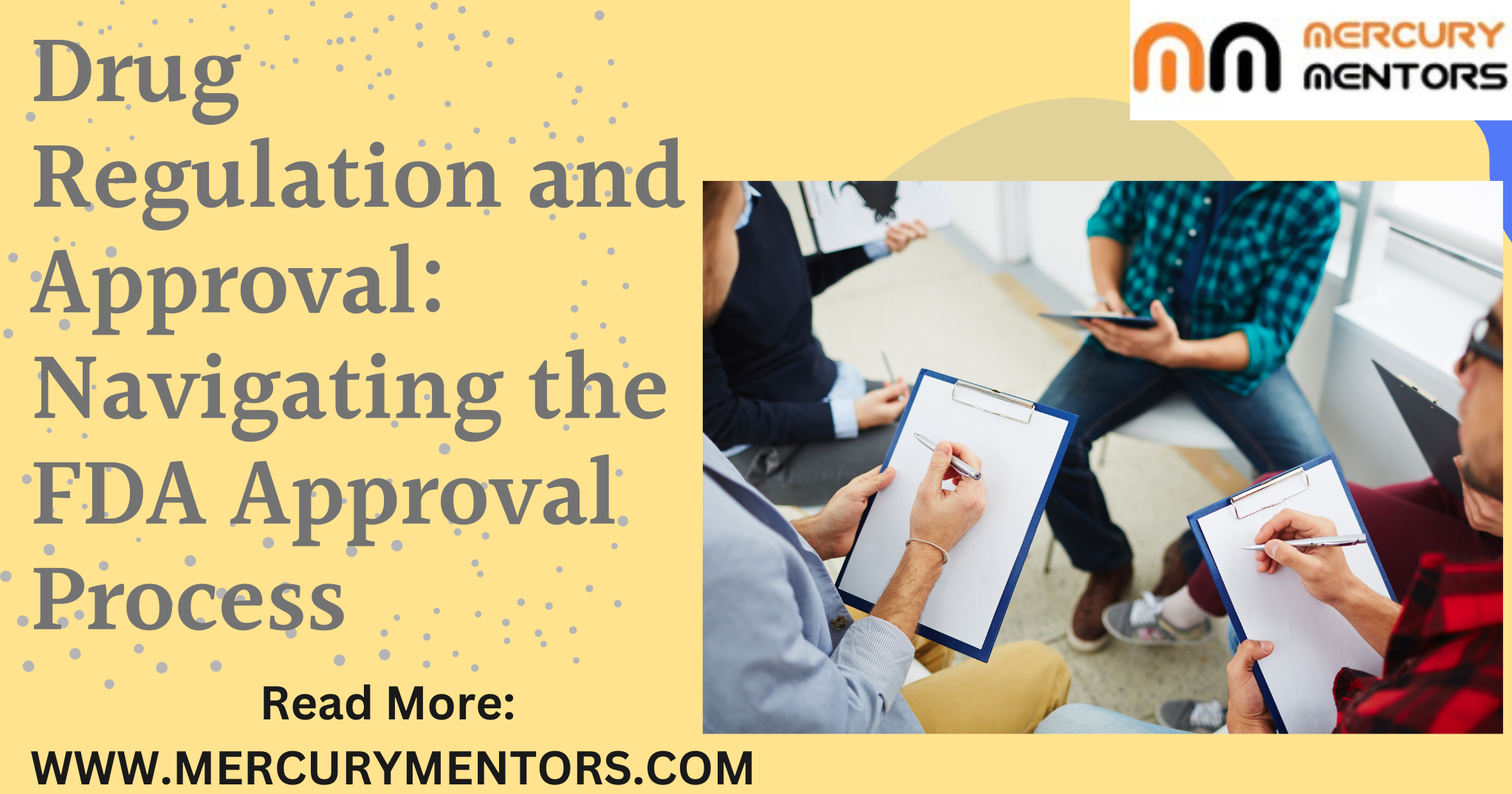Are you looking to Enroll in course?
Are you ready to take your skills to the next level? Enroll in our course today and unlock your full potential
Live Classes: Upskill your knowledge Now!
Chat NowPublished - Fri, 10 Mar 2023

Drug Regulation and Approval: Navigating the FDA Approval Process
The process of bringing a new drug to market is a complex and highly regulated process that involves multiple stages of testing and review. The US Food and Drug Administration (FDA) is responsible for regulating and approving drugs for use in the United States. In this blog, we will explore the FDA approval process and the various stages of drug development.
The FDA Approval Process
The FDA approval process is a multi-stage process that begins with preclinical testing and ends with post-marketing surveillance. The following are the key stages of the FDA approval process:
1. Preclinical Testing: Preclinical testing involves laboratory testing of the drug candidate in vitro and in animal models. This stage is focused on assessing the safety and efficacy of the drug candidate and identifying any potential safety concerns.
2. Investigational New Drug Application (IND): If preclinical testing is successful, the drug developer submits an IND application to the FDA. This application includes data from preclinical testing and a proposed clinical trial design.
3. Clinical Trials: Clinical trials are conducted in three phases. Phase I trials are focused on assessing the safety and pharmacokinetics of the drug candidate in healthy volunteers. Phase II trials are focused on assessing the efficacy and safety of the drug candidate in patients with the target disease. Phase III trials are larger and more comprehensive trials that assess the safety and efficacy of the drug candidate in a larger patient population.
4. New Drug Application (NDA): If the results of the clinical trials are positive, the drug developer submits an NDA to the FDA. This application includes data from all preclinical and clinical testing, as well as information on manufacturing, labeling, and post-marketing surveillance.
5. FDA Review: The FDA reviews the NDA and makes a decision on whether to approve the drug for marketing. The review process includes a thorough evaluation of the data, including safety and efficacy data, manufacturing data, and labeling information.
6.vPost-Marketing Surveillance: Once the drug is approved and on the market, the FDA continues to monitor its safety and efficacy through post-marketing surveillance.
Navigating the FDA Approval Process
Navigating the FDA approval process can be a daunting task for drug developers. The following are some tips for navigating the FDA approval process:
1. Start early: Drug development is a lengthy process that can take several years. It is important to start early and plan for each stage of the process.
2. Hire experienced professionals: It is important to hire experienced professionals, including regulatory affairs professionals, clinical trial specialists, and manufacturing experts, to ensure that each stage of the process is managed effectively.
3. Communicate with the FDA: Communication with the FDA is important throughout the drug development process. It is important to maintain open lines of communication with the FDA and address any concerns or questions that arise.
4. Keep up with regulatory changes: The regulatory environment is constantly changing. It is important to stay up-to-date on regulatory changes and adapt the drug development plan accordingly.
Conclusion
The FDA approval process is a complex and highly regulated process that requires careful planning and execution. Navigating the FDA approval process can be challenging, but with careful planning and the right team in place, drug developers can successfully bring new drugs to market and improve patient outcomes.

Fri, 16 Jun 2023

Fri, 16 Jun 2023

Fri, 16 Jun 2023
Write a public review